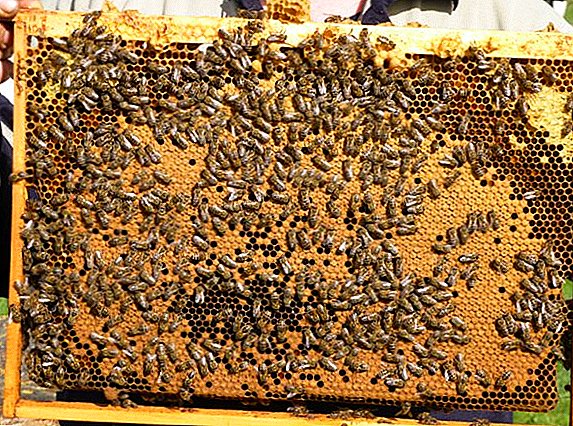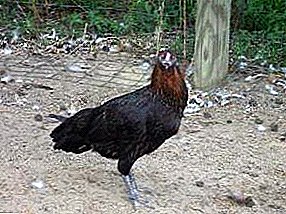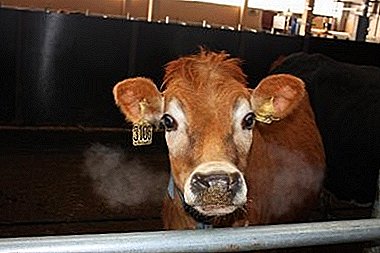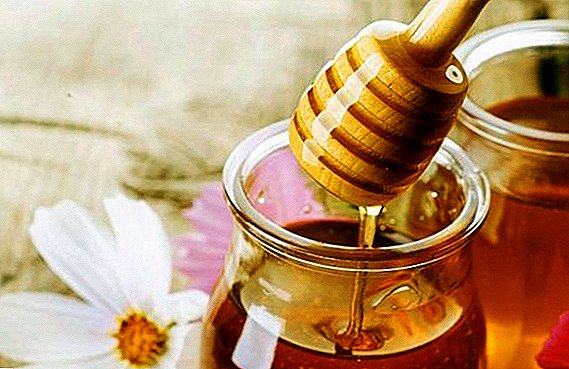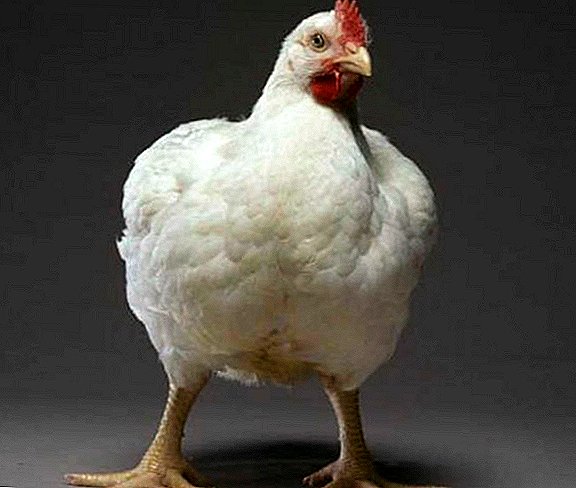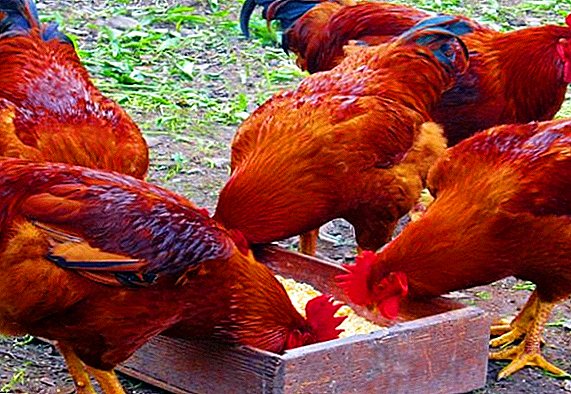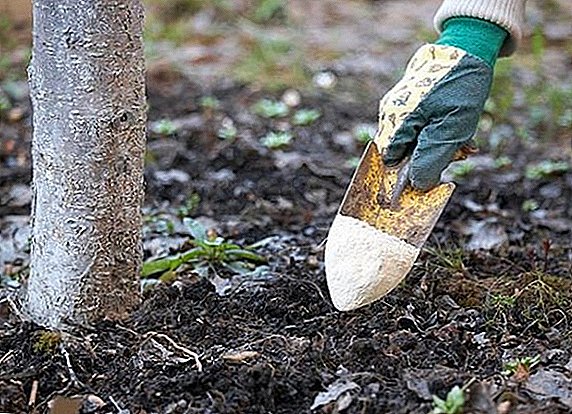 Completing the harvest in late autumn, summer residents and gardeners are trying to prepare fruit trees for the winter cold. First of all, the plants in your garden need the right, balanced and nutritious fertilizer. And if for experienced gardeners this procedure is standard, then beginners need additional recommendations. We will talk now about how to prepare the garden for the new season and how to properly feed some fruit trees.
Completing the harvest in late autumn, summer residents and gardeners are trying to prepare fruit trees for the winter cold. First of all, the plants in your garden need the right, balanced and nutritious fertilizer. And if for experienced gardeners this procedure is standard, then beginners need additional recommendations. We will talk now about how to prepare the garden for the new season and how to properly feed some fruit trees.
Main fertilizer
The best time to apply mineral or organic fertilizers is considered to be autumn, namely, mid-October. During this period sap flow ends and stops, a ripe harvest is collected, and the leaves begin to fall off.
Some gardeners say that it is better to begin feeding in late September, but only after all the fruits have been removed. There is no consensus on this issue - this fragmentation is due to the fact that each type of fruit trees is unique and requires a special approach.
Important! In the fall, nitrogen fertilizers cannot be applied to the soil, as they will only harm your garden. They are permissible only during the spring feeding.
Basic rules for the whole garden:
- you can start top dressing when all the fruits from the tree have been removed;
- Before starting, the barrel should be dug on an incomplete spade bayonet; the diameter of the excavated area should be approximately equal to the width of the crown;
- the earlier fertilizers are introduced before the frost, the more useful microelements the tree will absorb;
- you can start feeding from the end of September to the end of October, as this is the most favorable time;
- You can make fertilizers that contain sodium, calcium, molybdenum, cobalt, magnesium, phosphorus and manganese.
Type of fertilizer should be selected depending on the type of soil on your site. There is a diverse line of fertilizers, each of which has its own set of nutritional components suitable for a particular soil and maximally absorbed in such conditions.
You will probably be interested to read about what types of soil there are, as well as what system of fertilizer for different soils.If your soil is classified as heavy or clay, you need to significantly increase the dose of fertilizer for your garden. If the soil is sandy or sandy, the dose of top dressing should be reduced.
 In addition to the type of soil, age and type of plant play a big role in the choice of fertilizers and their volume. For different trees, their own individual fertilization rates and a list of rules and recommendations for feeding have been developed.
In addition to the type of soil, age and type of plant play a big role in the choice of fertilizers and their volume. For different trees, their own individual fertilization rates and a list of rules and recommendations for feeding have been developed.How to fertilize trees
The amount of nutrient solutions depends on how old the tree is. For young, middle-aged and old trees have their own rules and standards for fertilizer application. Let's see what are the features of fertilizing apples, pears, cherries and plums.
Feeding the apple
Although the apple tree is not considered to be a particularly capricious fruit tree, this does not remove from the gardener the duties of caring, pruning and timely feeding.
In the spring, the gardener will have to solve a whole list of important tasks for preparing the apple for the new season, namely:
- inspect the trees for the presence of branches that were damaged by frost or wind, and also affected by any diseases during the winter;
- remove damaged branches;
- to carry out the rejuvenation of poorly fruiting branches and pruning of old, outdated fragments of the crown;
- to clean lichen growths from the trunk;
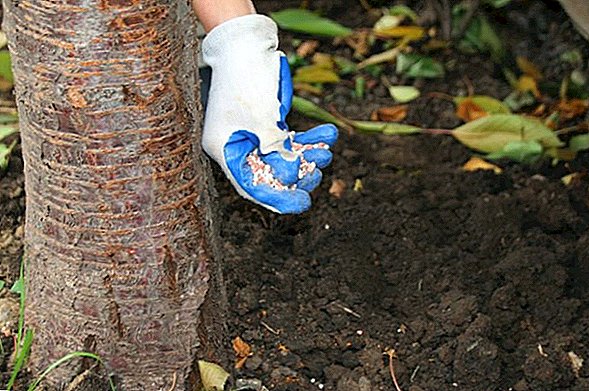
- carefully and carefully seal up all mechanical damages on the trunk and main branches, holes and cracks with the help of a garden warp;
- carry out preventive treatment of trees from pests and common diseases;
- whitewash trunks to protect the apple trees from burns caused by sunlight, and in order to scare various pests;
- to make the first top dressing from organic and mineral fertilizers into the soil under the apple trees.
If spring care for an apple tree is caused by the need to improve its fruiting, then autumn procedures are associated with preparing the tree for long frosts.
Autumn work in the garden on apple trees, which are recommended to be held in late September, will be reduced to the same procedures as in early spring. But this concerns only trimming, removal of shrunken or sick crown fragments, whitewashing and the treatment of wood wounds with garden pitch.
The process of fertilization is determined by individual rules. First you need to thoroughly clean the area under the tree from the fallen branches, bark, leaves and rotten fruit. This garbage can cause great harm to the plant in the winter, and therefore it is necessary to get rid of it.  Then you should dig up the area on an incomplete bayonet of a shovel and only then apply fertilizer. It is best to do this before digging for irrigation, as fertilizers are better absorbed in liquid form.
Then you should dig up the area on an incomplete bayonet of a shovel and only then apply fertilizer. It is best to do this before digging for irrigation, as fertilizers are better absorbed in liquid form.
Learn more about planting, pruning and caring for apples in the fall, as well as how to cover an apple tree for the winter.
In the autumn, you can make potassium chloride, dolomite, wood ash, superphosphate. Dosages for different ages of the tree vary:
- For young apple trees (up to 5 years), this figure is 25 kg.
- For middle-aged apple trees (up to 10 years), the weight of fertilizers is 30-35 kg.
- For older apple trees (over 10 years old), this volume varies from 40 to 50 kg, as older trees require more nutrients.
Important! As a natural fertilizer, you can only use rotten, repackaged organic matter, because fresh manure and compost are too intense for trees, especially young ones, and the roots can get burned, due to which the plant will die in winter.

After fertilization and digging, mulching should be carried out with rotted manure or humus. Plants are additionally fed with potassium sulfate (200 g), magnesium (300 g) and superphosphates (300 g), which are mixed with humus.
It is possible to cover the trunks of apple trees, up to the third branch of branching, with tolya or chopped fir branches. These materials will protect the trunks and branches of apple trees from frost and unwanted pests.
Feeding pears
Activities for feeding pears in the winter also begin with the removal of unwanted branches, foliage and rotten fallen fruits from under the crown, in order to free up the area for digging. Further, natural fertilizers are applied in the form of humus, with additional feedings with potassium sulfate, magnesium and superphosphates in proportions equal to those of an apple tree.
We recommend that you read about how to plant and cut the pear in the fall.
It is necessary to begin autumn dressing at the end of September, when a third of the crown of pear will turn yellow. At the same time, you can take to pruning dry and damaged branches, cleaning lichens from the bark, repairing cracks and crevices with garden pitch, as well as whitewashing to protect against pests. 
Important! It is necessary to familiarize yourself with the instructions for the use of a chemical fertilizer, because overdose can be dangerous not only for the tree, but also for human health, when the next year will be collected fruits.
Basically, about 5-7 kg of top dressing is allocated to one square meter of soil under the tree. Based on this indicator, you can make calculations for different ages of pear:
- For a young pear (up to 5 years), the amount of consumption of top dressing material will be 25-28 kg, since the average area of the crown and the ground under it, which is to be fertilized, takes about 5 square meters.
- For middle-aged pears (up to 10 years), the total amount of fertilizer consumption is 35-45 kg, due to the fact that the area is about 7 square meters.
- For old pears (over 10 years), the total weight of dressing materials will be 50-60 kg; land area - about 10 square meters.
As already mentioned, during the autumn feeding it is necessary to abandon nitrogen fertilizers. They are suitable only for spring activities for fertilizing pear orchards.
We advise you to learn more about such popular varieties of pears as "Bere Bosk", "In memory of Yakovlev", "Just Maria", "Talgar beauty", "Chizhovskaya", "Noyabrskaya", "Duchess Summer", "Veles", "Forest beauty "," Klapp's Lover "," Nika "," Fairytale "and" Muscovite ".
 It is better to choose organic and mineral. The best way to feed will be to first introduce mineral chemical fertilizers rich in calcium and phosphorus, and only then cover the excavated and fertilized area with mulch from equal parts of peat and humus.
It is better to choose organic and mineral. The best way to feed will be to first introduce mineral chemical fertilizers rich in calcium and phosphorus, and only then cover the excavated and fertilized area with mulch from equal parts of peat and humus.
It will be useful for you to read about why you need soil mulching.
Also a good option for feeding pears will be pre-watering about 20-30 liters of water. This will prepare the soil and roots of the tree for the rapid implementation and absorption of beneficial micro and macro elements.
If in the winter a one-time feeding of pears is carried out, then in the spring, before the start of the new season, there should be a whole series of additional procedures for feeding.
In the gardener's schedule, in whose garden pears grow, it is worth making the following feedings for spring:
- first spring - with the beginning of the awakening of the kidneys;
- the second spring - in the flowering phase;
- the third spring - after the fall of the inflorescences;
- top dressing of pears in the summer in the foliar way - carried out in June;
- foliar top dressing in summer - in July.

Did you know? It turns out that a soft and juicy pear fruit can increase the strength of tooth enamel. This is due to the presence of trace elements in the fruit, phosphorus and calcium.
Having made such a fertilizer complex, you will supply your pears with the maximum amount of nutrients.
Top dressing cherries
Top dressing of cherries is generally similar to the fertilizer of previous fruit trees. It should begin around mid-September, after harvest and the beginning of yellowing and dropping foliage.
Initially, it is necessary to remove everything that is of no value to the tree and for you, namely: dry and diseased branches, excess shoots that no longer bear old shoots, lichens on the bark. You should also close up all the cracks on the surface of the trunk and branches with a garden pitch, and then remove all debris, including fallen leaves, from the place of the intended digging. 
Next is watering. For young plants, one bucket (10 liters) of water is enough, and for trees older than five years, 15-20 liters should be used.
Did you know? The cherry fruit is a large number of phytoncides, which effectively resist the development of viruses and bacteria. Because of this, you can use fresh cherry leaves when preserving vegetables for the winter - this prevents fermentation and prolongs the shelf life of pickles.
After all the preparatory work is completed, go to the immediate procedure fertilizer. Dig up the area around the cherry tree (the area of this area, as in the previously described cases, will be equal to the diameter of the crown of the tree).
It is necessary to act carefully, not dig deep, because at a distance of about 20 cm from the surface of the earth lies the root system of the plant. As a fertilizer, it is often recommended to use natural, natural ingredients, such as chicken manure, manure and humus.  All organics should be applied in small sizes, approximately one bucket per tree. Of industrial compounds are not superfluous phosphate and potash fertilizers, but from the nitrogen, as in other cases, should be abandoned until spring.
All organics should be applied in small sizes, approximately one bucket per tree. Of industrial compounds are not superfluous phosphate and potash fertilizers, but from the nitrogen, as in other cases, should be abandoned until spring.
The volume also depends on the age of the tree:
- For young cherries (up to 5 years), the amount of consumption of top dressing material will be 16-22 kg.
- For medium-aged cherries (up to 10 years), the total amount of fertilizer consumption is 25-35 kg.
- For old cherries (over 10 years), the total weight of dressing materials will be 38-45 kg.
Important! Cherry trees are much more effective in absorbing trace elements from water-based solutions. To prepare such a nutrient solution and fertilize a tree, you will need a bucket of water (10 liters), in which 3 tablespoons of superphosphate and 2 tablespoons of potassium sulfate are diluted - 4 buckets of such a solution are needed for each tree.
When the first frost occurs, dilute the 4% urea solution and spray the crown of the cherry. This way you protect it from possible pests that are just waiting for the opportunity to nestle in the bark and feed on it throughout the winter.  And although the cherry is considered to be a frost-resistant plant, you should still ensure that it is warm. Therefore, under the tree you should not remove the snow, which is a natural insulation and protects the earth and the roots from frost. In addition, roofing, spruce branches or a scattering of needles, as well as sawdust can act as a heater.
And although the cherry is considered to be a frost-resistant plant, you should still ensure that it is warm. Therefore, under the tree you should not remove the snow, which is a natural insulation and protects the earth and the roots from frost. In addition, roofing, spruce branches or a scattering of needles, as well as sawdust can act as a heater.
Top dressing plums
Plums are sensitive to temperature fluctuations in the winter, so they need to be further fed. After harvesting and adjusting the crown, you should prepare organic fertilizers in an amount that is calculated depending on the age of the tree:
- For young plums (up to 5 years), the amount of consumption of top dressing material will be 10-12 kg, due to the increased sensitivity of the plum to organic fertilizers.
- For a middle-aged plum (up to 10 years), the total amount of fertilizer consumption is 15-25 kg, depending on the scale of the crown (2-3 kg of manure or compost are allocated to each square meter of land area).
- For old plums (more than 10 years), the total weight of dressing materials will be 30-40 kg.

In addition, you can connect to these volumes another 25 g of urea per square meter. All this mixture should be dug up to provide minerals with quick access to the root system.
As a natural fertilizer, especially for trees up to 3 years old, it is better to use compost. Manure has too high acidity, and therefore can burn the roots and base of the plum stem, thereby causing irreparable harm to it.
For plums, it is also better not to use nitrogen fertilizers in the autumn. They should be made in the spring, before flowering.
Get acquainted with the secrets of anti-aging pruning, as well as varieties of grafting fruit trees.
Watering trees
Some gardeners prefer frequent, but not enough abundant watering of the orchard. Such irrigation is not only not able to benefit the tree, but can also affect it negatively. It will be much more effective to water once a week or two, but this is to soak the earth at least half a meter. Such watering will be useful for all fruit-bearing trees. 
Here are a few highlights to keep in mind for proper watering in your garden:
- For young trees (up to 5 years), the required water rate is 6-8 buckets.
- For middle-aged (up to 10 years), this figure increases to 10-12 buckets.
- For older members of the garden (more than 10 years), you need 14-16 buckets.
Important! If sandy soils prevail on your site, it is better to water this garden often, but in small volumes. If the soil belongs to the category of heavy clay, the garden should be saturated with water rarely, but abundant.
There are many ways to irrigate trees, but the most efficient gardener available is digging trenches or digging a tree around a ring and then erecting an earth mound along the edges. This design will allow the water to linger and gradually seeping deeper and deeper into the thickness of the earth, to the roots of the tree.  So, when taking care of a garden, you need to take into account that each type of tree is individual and requires your attention. Observing all the recommendations that are specified in the instructions for fertilizers, and the parameters for calculating organic dressings, you can provide your garden with everything you need for a successful wintering season and a new season.
So, when taking care of a garden, you need to take into account that each type of tree is individual and requires your attention. Observing all the recommendations that are specified in the instructions for fertilizers, and the parameters for calculating organic dressings, you can provide your garden with everything you need for a successful wintering season and a new season.



